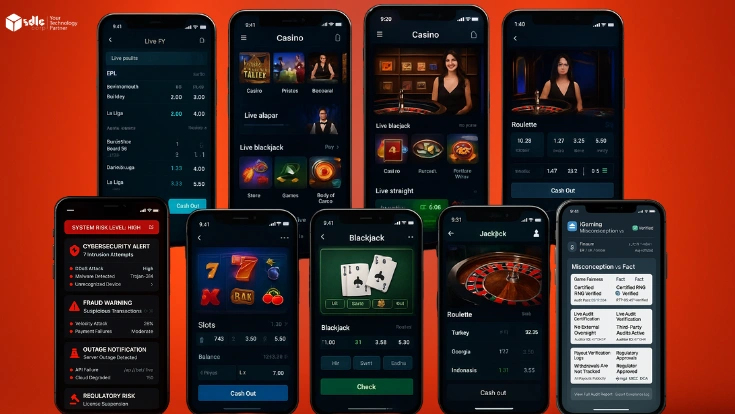As blockchain technology continues to grow, one of the most pressing challenges is scalability. This issue is especially critical for Decentralized Finance (DeFi) applications, where high transaction volumes can lead to congestion, slow processing times, and increased fees. Two of the most prominent solutions to address Solana blockchain development company blockchain scalability are Layer-2 solutions and sharding. This blog will explore both, analyzing their strengths and weaknesses, and determining which is the better scalability solution for the evolving DeFi ecosystem.
Understanding Blockchain Scalability
Before diving into the comparison, it’s essential to understand why scalability is crucial. Blockchain networks like Ethereum and Solana are decentralized, meaning every transaction must be validated by multiple nodes. This validation process ensures security and transparency but can also lead to bottlenecks as the network grows. As more users participate in DeFi staking platforms, trade on Solana NFT marketplaces, or use DeFi wallets like MetaMask in blockchain transactions, the need for scalable solutions becomes apparent. This is where DeFi development company play a critical role, as they focus on building and optimizing platforms to handle increased demand efficiently. By addressing scalability issues, these services contribute to smoother, more reliable blockchain experiences.

Layer-2 Solutions: Enhancing Scalability
Layer-2 solutions are protocols built on top of an existing blockchain, aiming to reduce the load on the main chain by handling transactions off-chain. These solutions do not alter the underlying blockchain but instead improve its efficiency by offloading some of the computational work. In the realm of DeFi blockchain development, Layer-2 solutions play a crucial role by enabling faster and more cost-effective transactions, thereby enhancing the scalability and usability of decentralized finance applications. By integrating these solutions, developers can optimize performance and reduce fees, addressing some of the scalability challenges faced by major blockchains while maintaining the integrity and security of the DeFi ecosystem.
Types of Layer-2 Solutions
- State Channels: State channels allow two or more parties to create a private communication channel where transactions can occur off-chain. Once all transactions are completed, the final state is recorded on the main blockchain. This method significantly reduces the number of transactions that need to be processed on-chain, thereby increasing scalability.
- Sidechains: Sidechains are separate blockchains connected to the main chain (e.g., Ethereum). They can process transactions independently and periodically submit summaries to the main chain. Sidechains are particularly useful for specific use cases, such as gaming or the Solana Metaverse, where rapid transaction processing is essential.
- Rollups: Rollups aggregate multiple transactions into a single transaction that is then processed on the main chain. This approach reduces the computational load and lowers gas fees, making it highly suitable for DeFi wallet development companies seeking to optimize transaction costs for their users.
Benefits of Layer-2 Solutions
- Cost Efficiency: By offloading transactions from the main chain, Layer-2 solutions significantly reduce transaction fees. This is particularly beneficial for users of top DeFi lending platforms and those engaged in DeFi staking, where frequent transactions are common.
- Speed: Transactions on Layer-2 solutions are processed faster, enabling real-time applications like Solana NFT marketplaces and decentralized exchanges (DEXs) to operate more smoothly.
- Interoperability: Layer-2 solutions can be integrated with various blockchains, allowing DeFi wallets and other applications to function across multiple networks without congestion.
Challenges of Layer-2 Solutions
- Security Concerns: Since transactions are processed off-chain, there’s a potential risk of reduced security compared to on-chain transactions. DeFi business models must carefully consider this when integrating Layer-2 solutions.
- Complexity: Implementing Layer-2 solutions can be technically challenging. DeFi wallet development companies and those looking to hire blockchain developers must have specialized expertise to navigate these complexities.

Sharding: A Structural Approach to Scalability
Sharding is a method that involves dividing a blockchain’s entire state and transaction processing into smaller, more manageable pieces called shards. Each shard operates as an independent blockchain, processing its transactions and storing its data. The main chain, known as the beacon chain, coordinates between shards to ensure data consistency and security. In the context of a DeFi development company, implementing sharding can significantly enhance the scalability and performance of decentralized finance applications. By distributing transaction loads across multiple shards, DeFi platforms can handle a higher volume of transactions efficiently and reduce congestion, ultimately improving the user experience and supporting the growth of the DeFi ecosystem.
How Sharding Works
In a sharded blockchain, each node is responsible for processing transactions for a specific shard rather than the entire network. This division of labor allows for parallel transaction processing, significantly increasing the network’s capacity.
For instance, in a Solana project development service, sharding could be used to manage different aspects of the platform, such as DeFi staking, NFT marketplaces, and DeFi wallets, without overloading any single shard.
Benefits of Sharding
- Scalability: Sharding can theoretically allow a blockchain to scale infinitely by adding more shards. This is particularly beneficial for large-scale DeFi staking platform developments and complex ecosystems like the Solana Metaverse.
- Decentralization: By dividing the workload among multiple shards, sharding maintains a high level of decentralization, which is a core principle of blockchain technology.
- Efficiency: Sharding optimizes resource utilization, ensuring that each node only processes a portion of the network’s transactions, leading to faster processing times.
Challenges of Sharding
- Complex Implementation: Sharding requires significant changes to the blockchain’s architecture. This complexity can be a barrier for projects that need to scale quickly, such as Solana NFT marketplace development.
- Cross-Shard Communication: Ensuring smooth communication between shards is a critical challenge. If not properly managed, it can lead to inconsistencies and security vulnerabilities.
- Security Risks: While sharding increases efficiency, it also introduces new attack vectors. Each shard may be more vulnerable to attacks if not adequately secured.
Layer-2 Solutions vs. Sharding: A Comparative Analysis
Both Layer-2 solutions and sharding offer promising approaches to blockchain scalability, but they cater to different needs and use cases.
1. Scalability
- Layer-2 Solutions: Layer-2 solutions offer immediate scalability by offloading transactions from the main chain. They are highly effective for applications that require fast, low-cost transactions, such as DeFi wallets and staking platforms. However, their scalability is limited to the extent that the main chain can handle the aggregated transactions.
- Sharding: Sharding provides a more fundamental solution by increasing the blockchain’s capacity to process transactions in parallel. This makes it a superior option for projects with long-term scalability needs, such as Solana blockchain development companies focusing on large ecosystems.
2. Security
- Layer-2 Solutions: Security is a concern for Layer-2 solutions since transactions are processed off-chain. However, robust mechanisms like fraud proofs and zk-rollups can mitigate these risks. For businesses focused on DeFi wallet development, ensuring that Layer-2 solutions have strong security measures is crucial.
- Sharding: Sharding offers strong on-chain security, as each shard is secured by the main chain. However, the complexity of sharding can introduce new security challenges, particularly in ensuring cross-shard communication.
3. Cost Efficiency
- Layer-2 Solutions: Layer-2 solutions are generally more cost-effective, as they significantly reduce transaction fees. This makes them ideal for users of DeFi staking platforms and DeFi wallets, where frequent transactions can otherwise become prohibitively expensive.
- Sharding: While sharding can improve efficiency, the cost of implementing and maintaining a sharded blockchain is higher due to the complexity involved. However, once implemented, it can handle a higher volume of transactions without increasing costs, making it suitable for large-scale projects.
4. Interoperability
- Layer-2 Solutions: Layer-2 solutions are often designed to be interoperable across multiple blockchains, allowing DeFi wallets and other applications to function seamlessly across different networks. This is particularly useful for developers building cross-chain DeFi applications.
- Sharding: Sharding is typically implemented within a single blockchain, limiting its interoperability. However, efforts are being made to develop cross-shard communication protocols that could enhance interoperability in the future.
5. Ease of Implementation
- Layer-2 Solutions: Layer-2 solutions can be implemented relatively quickly, making them ideal for projects that need immediate scalability. For example, DeFi staking platform developers can integrate Layer-2 solutions to handle increased transaction volumes during peak periods.

Which Is the Better Scalability Solution?
The choice between Layer-2 solutions and sharding depends on the specific needs of the project. For projects requiring immediate scalability, cost efficiency, and interoperability, Layer-2 solutions are often the better choice. They are particularly well-suited for DeFi wallets, staking platforms, and applications that need to operate across multiple blockchains.
On the other hand, for projects with long-term scalability needs and the resources to implement a more complex solution, sharding offers a more sustainable path. It is ideal for large-scale ecosystems like the Solana Metaverse or Solana NFT marketplaces, where the ability to process a high volume of transactions in parallel is crucial.
Case Study: Solana NFT Marketplace Developmen
Solana is a blockchain known for its high throughput and low transaction fees, making it an attractive platform for NFT marketplaces and other DeFi applications. Solana’s architecture, which includes both sharding and Layer-2-like solutions (such as parallel processing), demonstrates the power of combining both approaches.
For Solana NFT marketplace development, the combination of sharding and Layer-2 solutions provides a highly scalable and efficient platform. Sharding ensures that the network can handle a large volume of transactions, while Layer-2 solutions offer additional speed and cost efficiency. This hybrid approach makes Solana a preferred choice for developers and businesses looking to create high-performance DeFi applications.
Conclusion
Scalability is a key challenge in blockchain technology, especially in the rapidly growing DeFi space. Layer-2 solutions offer immediate scalability, cost efficiency, and cross-chain interoperability, making them ideal for DeFi wallets and staking platforms that need low fees and high speed. Sharding, on the other hand, provides a more sustainable approach for large-scale ecosystems like the Solana Metaverse and NFT marketplaces, enabling parallel transaction processing.
Choosing between Layer-2 solutions and sharding depends on the project’s needs, resources, and the balance between scalability, security, and cost. DeFi development company are crucial in navigating these options to build efficient, scalable blockchain solutions.

















